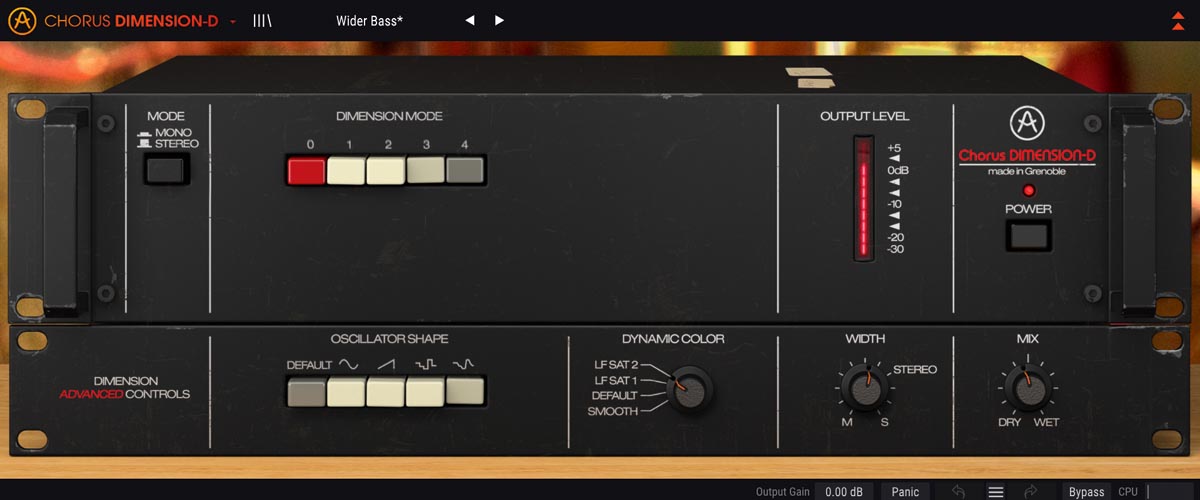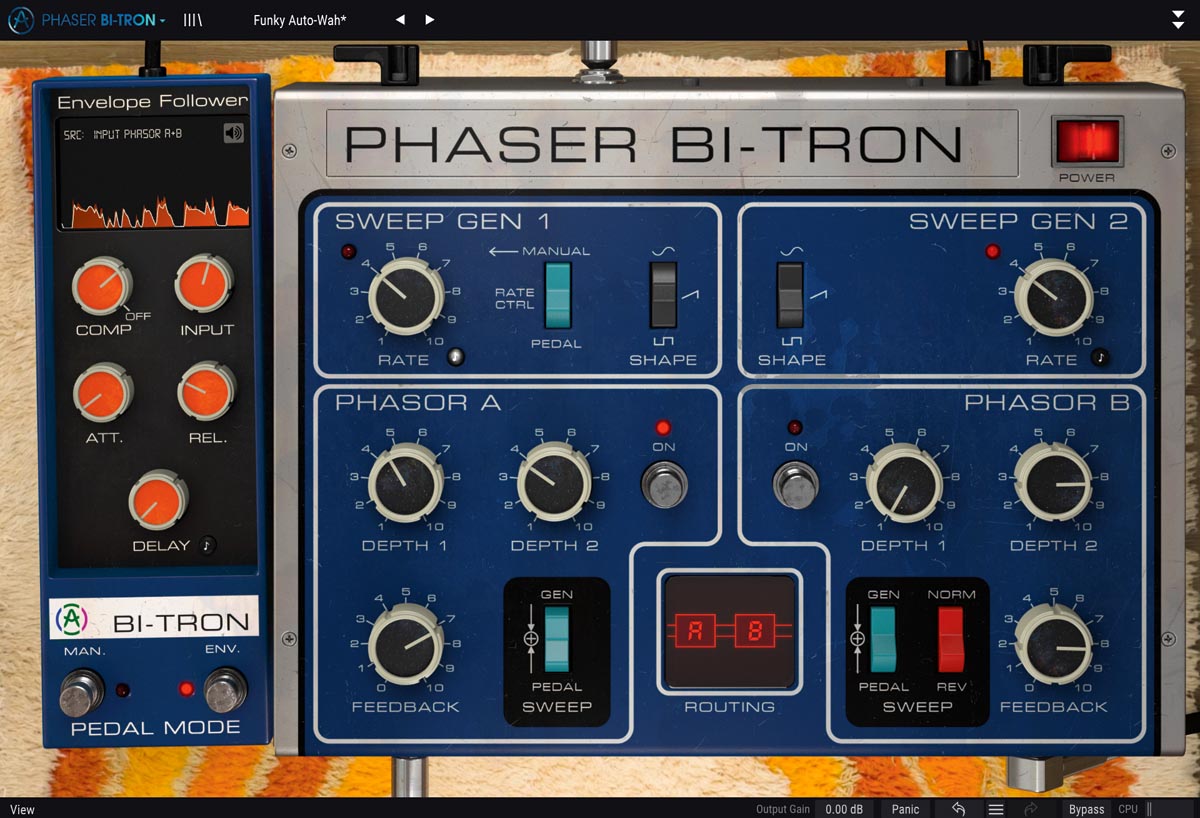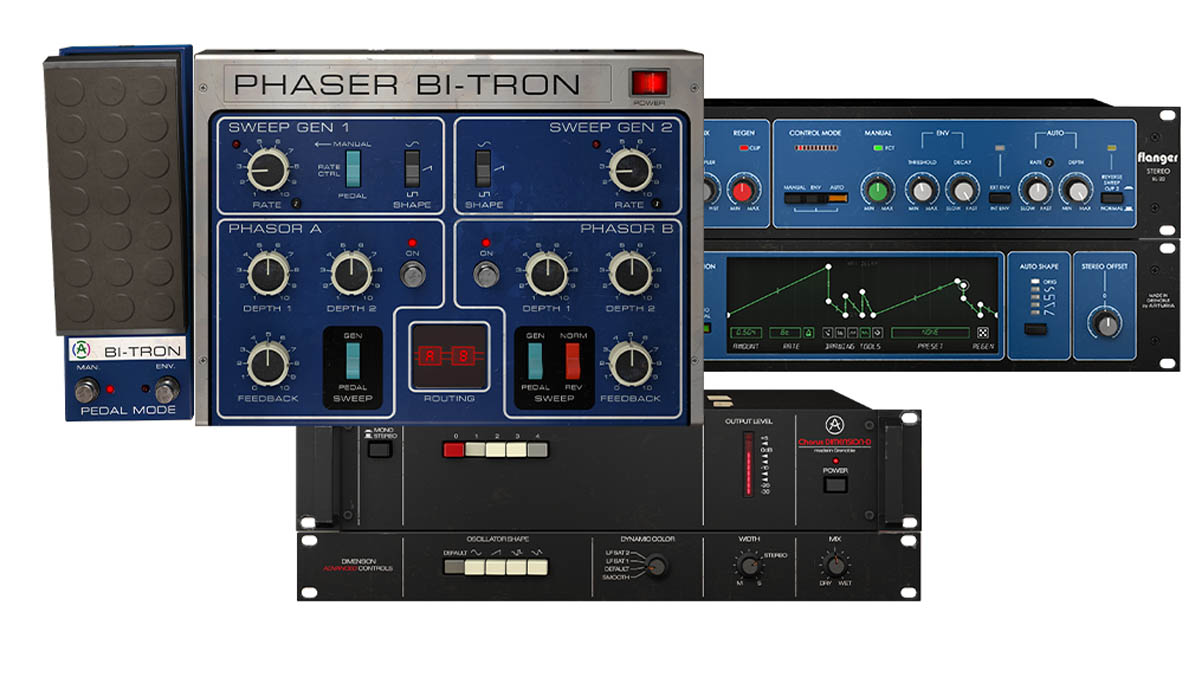MusicRadar Verdict
Arturia have taken three classic modulation effects, successfully captured the original sound and then refreshed them for the modern DAW user. Brilliant.
Pros
- +
All three plugins retain the original features.
- +
Arturia’s modelling technique delivers very authentic sonics.
- +
Useful and extensive extra features have been added.
- +
Extra features panels can be folded away for neatness.
- +
Phaser Bi-Tron is particularly well-equipped.
- +
Chorus Dimension D has some very interesting new flavours.
Cons
- -
Not much.
MusicRadar's got your back
What is it?
Arturia’s FX Collection features 15 premium effects created using the same True Analog Emulation physical and circuit modelling employed in their V Collection synths.
Processors include channel strips, delays, filters, compressors and reverbs but, until now, no modulation effects. Thankfully their three new plugins resolve that situation.
Chorus Dimension D, Phaser Bi-Tron and Flanger BL-20 (VST, VST3, AU, AAX) are circuit-accurate emulations of three modulation classics, and are now available as the 3 Modulation FX You’ll Actually Use bundle (€199) or individually (€100).
Performance and verdict
Parallel dimension
Chorus Dimension D is a stereo chorus processor that’s great for adding subtle width and richness to synths, basses, vocals and beyond. However, it doesn’t have typical chorus controls as it relies on four preset Dimension Modes.
The first three modes deliver increasingly intense chorus effects with Mode 4 used in conjunction with the other modes to increase their wet signal. One further option, Mode 0, removes the delay lines but retains the surrounding circuitry to deliver a darker, slightly more crunchy, outcome than full plugin bypass.

Users of Dimension D hardware units have been known to combine the mode buttons in other ways, but in testing Arturia found these didn’t produce different outcomes, so no further Mode combinations are included. However, they have added some extras of their own, accessed via the Dimension Advanced Controls panel.
Options include four additional LFO shapes (Sine, Ramp, Sample & Hold and Sample & Glide), three Dynamic Color saturation types, Stereo Width and overall Mix blend.
Want all the hottest music and gear news, reviews, deals, features and more, direct to your inbox? Sign up here.
These additions massively extend the available palette. We particularly like the sample & hold LFO shape, which produces a tempo-synced and quite obvious modulation. Meanwhile the Dynamic
Color settings can adjust the internal compressor/expander circuit to achieve various degrees of saturation.
Pure Phase

Phasing really lends itself to electric guitar, and vintage pedals such as the MXR 90 and Electro Harmonix Small Stone can set you back serious cash. But these are all quite basic compared to Phaser Bi-Tron. This twin phaser design based on the Mu-Tron classic really sets the bar with two Sweep Generators (LFOs) controlling Phasors A and B.
Arturia have kept the original functionality including the option to connect both phasers and Sweep Generator 1 to the expression pedal. However, they’ve supersized the plugin with loads of extras.
Key differences include an additional ramp-shaped LFO, independent time division tempo sync of each Sweep Generator, individual Depth controls for each LFO on each phaser and individual phaser bypass.
Clicking on the main processor name reveals further parameters, including individual pole selector with up to 12 poles for each phaser (the hardware is limited to six poles), individual wet/dry Mix, individual Sweep Gen 1 and 2 invert for both phasers when using the processor in stereo, and an overall 12dB/oct Hi-pass input filter (20Hz to 3kHz).

• SoundToys Phase Mistress $129
This well-established phaser plugin is mighty flexible and yet still sounds great.
• Universal Audio Studio D Chorus £115
This plugin delivers an excellent hardware emulation for UAD-2 and Apollo users.
You can now apply a combination of both Sweep Gen and Pedal sources to each phaser, and underneath the Pedal you’ll also find an Envelope Follower mode.
Finally, signal routing incorporates both serial and parallel operation either in mono or stereo. Phaser Bi-Tron delivers a gloriously rich phaser sound that has a complexity you’ll struggle to achieve with simpler classic emulations.
We particularly like how watery it sounds in serial mode, and the parallel stereo mode combined with the Phase Reverse option delivers lovely stereo effects. The 40 or so presets go some way to demonstrating its capabilities, but it’s definitely a plugin that will delight tweakers.
Flanger BL-20
Flanger BL-20 is a twin delay design with stereo or mono operation. It has three Control Modes – Manual, Env and Auto – each with corresponding controls. The modes can be combined if desired and the envelope includes a sidechain option.
There’s Regeneration (feedback) to help increase the flanging depth and the direction can be reversed on one output (Reverse Sweep O/P2). These are all features from the original hardware, but Arturia have added plenty of extras.

First up, an option called Zero Crossing inverts the modulated signal and delays the dry signal. This can result in a deeper flange effect, and this sometimes suited our sounds quite well and sometimes less so. Next up the Auto Mode includes tempo sync and four further LFO shapes.
We particularly like the ramp up and ramp down options, though there’s a square wave option if you fancy some crazy effects. On the drop-down panel there’s also a Hi-Pass filter (0 to 3kHz) and a Stereo Offset control, which is great for artificially altering the stereo image.
The most powerful addition is the Function Generator. This allows you to create a free-running or tempo-synced curve which is then assigned to the Manual mode. Potent. These modulation effects have been wisely selected and impressively modelled, and you’ll keep coming back to the lush sound they produce.
Whether you use them for subtle enhancement or feature sounds there are also loads of software enhancements to keep things fresh. It takes a special product for us to award top marks, but this plugin bundle is just that.
MusicRadar verdict: Arturia have taken three classic modulation effects, successfully captured the original sound and then refreshed them for the modern DAW user. Brilliant.
Hands-on demos
Arturia
Ask.Audio
Noisegate
Specifications
- TYPE: Modulation plugins (bundle or individually priced €100)
- KEY FEATURES: Flanger BL-20, Phaser Bi-Tron (based on Mu-Tron phaster), Chorus Dimension D
- SYSTEM REQUIREMENTS: Windows 7 or later, Mac OSX 10.10 or later, 1GB free hard disk space OpenGL 2.0 compatible GPU, | VST 2.4 (64-bit), VST 3 (64-bit), AAX (64 bits with PT 11), Audio Unit (64-bit), NKS* (64-bit DAWs only)
- CONTACT: Arturia
Computer Music magazine is the world’s best selling publication dedicated solely to making great music with your Mac or PC computer. Each issue it brings its lucky readers the best in cutting-edge tutorials, need-to-know, expert software reviews and even all the tools you actually need to make great music today, courtesy of our legendary CM Plugin Suite.

